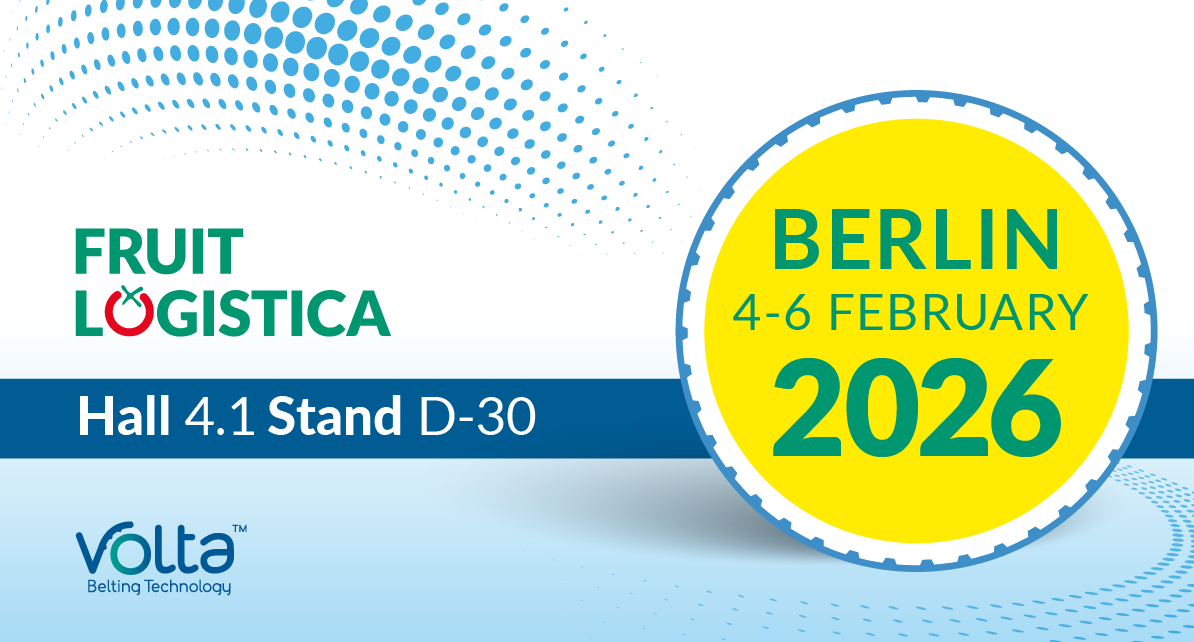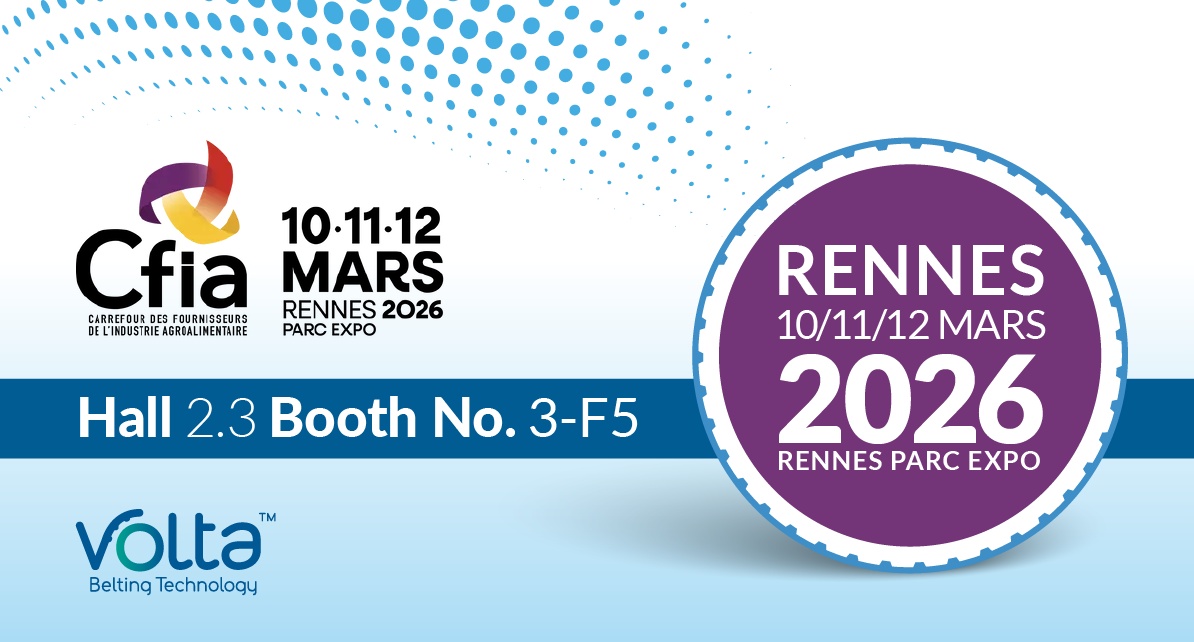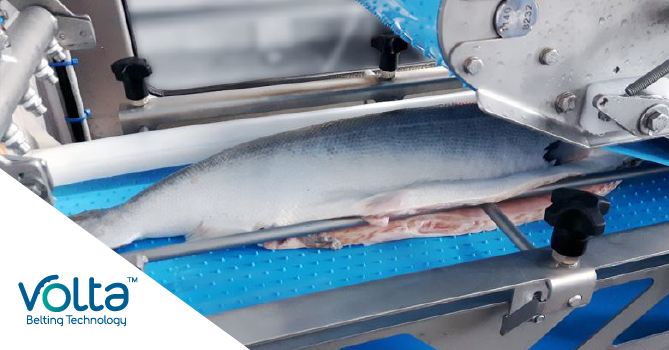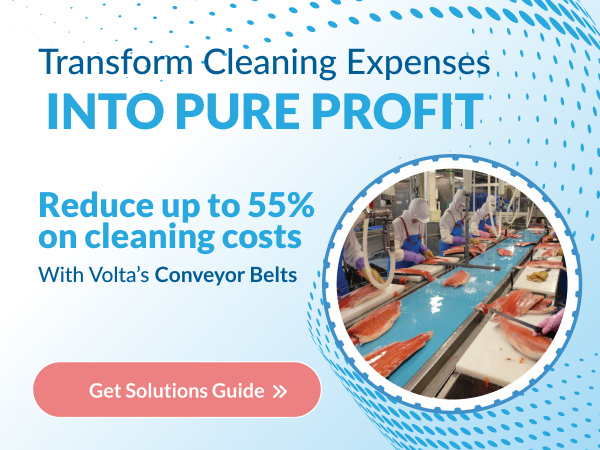Introduction:
At Volta Belting, innovation is at the heart of everything we do. We are proud to introduce J material, our latest breakthrough in belting technology, engineered in-house to deliver exceptional strength, performance, and versatility. To give you an inside look at what makes this material unique, we spoke with our Director of R&D, Materials and Process Development, Dr. Eli Shulman, about the development process, the challenges overcome, and the advantages J material offers to our customers.
What inspired the development of the J material, and what key challenges were you aiming to solve in the market?
Through our market analysis, we found that the ideal customer belt had, in fact, already been pioneered by Volta: the H belt. With over 40 years of proven performance, it stands out for its exceptional mechanical strength, superior hydrolysis and chemical resistance, and reliable operation in both low- and high-temperature environments.
Its main drawback, however—and the factor limiting wider adoption—was its very poor weldability, particularly the inability to weld using HF techniques.
To address this, we developed the J belt. It retains all the proven strengths of the H belt while introducing excellent weldability, including full compatibility with HF welding methods, making it a truly versatile and customer-focused solution.
Can you explain what makes J material unique compared to competing belting solutions?
What makes the J material unique is its ability to combine all the strengths customers demand in one solution—something competing belts typically cannot achieve. Unlike many alternatives that struggle with hydrolysis, chemical exposure, creep, or weldability, the J material offers:
✔ Exceptional mechanical strength and durability
✔ High resistance to hydrolysis and chemicals resistance
✔ Reliable performance across a wide temperature range
✔ Excellent weldability, including HF techniques
✔ Low-friction surface for smoother product flow and reduced energy use
This rare combination of properties makes the J material a complete, future-proof belting solution unmatched by conventional competitors.
What was the most complex part of the engineering process to ensure J material meets both strength and hygienic standards?
We created hundreds of formulations, and each time we approached the right composition, one critical property would be compromised. The real challenge was to design a material that not only retained all the essential advantages but also met the highest hygienic standards—resisting hydrolysis and wide range of chemicals restantce .
Every adjustment to enhance one property risked weakening another, so the core task was to engineer a complete material system that combined durability, weldability, and full food-contact safety into a single formulation.
How does the HF weldability and low friction of J material benefit customers in practical applications?
The HF weldability of J belt allows customers to create strong, seamless joints quickly and efficiently, reducing installation time and ensuring reliable belt performance. At the same time, its low friction surface minimizes product sticking, improves flow, and reduces wear—leading to smoother operation, lower maintenance costs, and extended belt life. Together, these benefits translate into higher productivity, improved hygiene, and reduced total cost of ownership for the customer.
What kind of testing or validation did the material go through to guarantee long-life performance and chemical resistance?
The J material underwent a comprehensive internal Volt’s validation program to ensure long-life performance and chemical resistance.
This included:
- Accelerated aging tests at high temperature and humidity to simulate years of use in a short time.
- Hydrolysis resistance testing, exposing the material to hot water and steam environments.
- Chemical immersion tests in oils, acids, bases, and cleaning agents to confirm stability under real processing conditions.
- Mechanical durability testing, including tensile strength, elongation, creep, and abrasion resistance.
- Weldability and splice strength evaluations, especially with HF welding techniques.
- Food-contact safety validation, ensuring compliance with international hygienic standards.
Together, these tests demonstrated that the J belt maintains its mechanical properties, chemical stability, and hygienic performance over extended operating periods.
In addition, we have already supplied J belts to selected customers for pilot testing in real food production environments, and the feedback has been highly positive.
Which main industries would the J material be most suitable for?
The J belt is most suitable for industries where strength, hygiene, and weldability are critical. Key sectors include:
- Food processing – especially meat, poultry, dairy, bakery, and confectionery, where hydrolysis and chemical resistance are essential.
- Beverage industry – handling high humidity and cleaning cycles.
- Pharmaceutical and nutraceutical production – requiring hygienic, easy-to-clean belts.
- Packaging – where low friction and high weldability improve efficiency.
- Industrial applications – demanding strong, durable belts with resistance to chemicals and temperature fluctuations.
In what ways can the J material support your sustainability goals
The J belt contributes to sustainability goals in several ways:
- Extended belt lifetime – High resistance to hydrolysis, chemicals, and wear reduces replacement frequency, lowering material consumption and waste.
- Energy efficiency – Its low friction surface minimizes drag, helping reduce energy use in conveyor systems.
- Efficient welding and repair – HF weldability enables strong, seamless splices, extending belt service life and reducing scrap.
- Safe for hygienic environments – Designed to meet food-contact standards, reducing reliance on harsh cleaning chemicals and improving overall process efficiency.
- Lower total environmental footprint – By combining durability, easy maintenance, and reliability, the J material helps customers achieve cost savings and reduced environmental impact.
The launch of J material marks a significant milestone in Volta’s commitment to high-performance, hygienic, and sustainable belting solutions. With its unique combination of strength, HF weldability, low friction, and chemical resistance, J material sets a new standard in conveyor technology. As Eli Shulman highlights, it is not just a product but a reflection of the dedication, collaboration, and expertise that drives Volta Belting forward.






